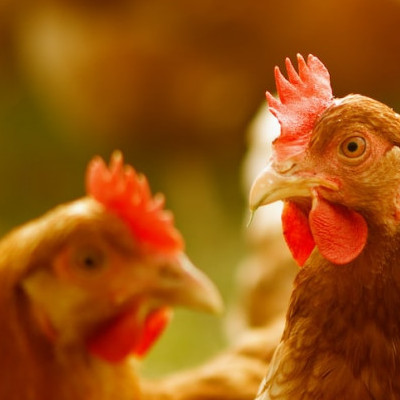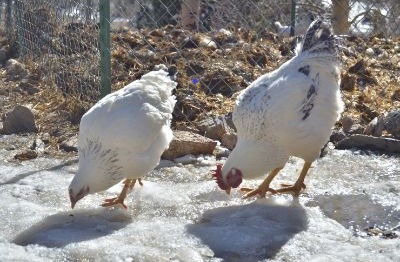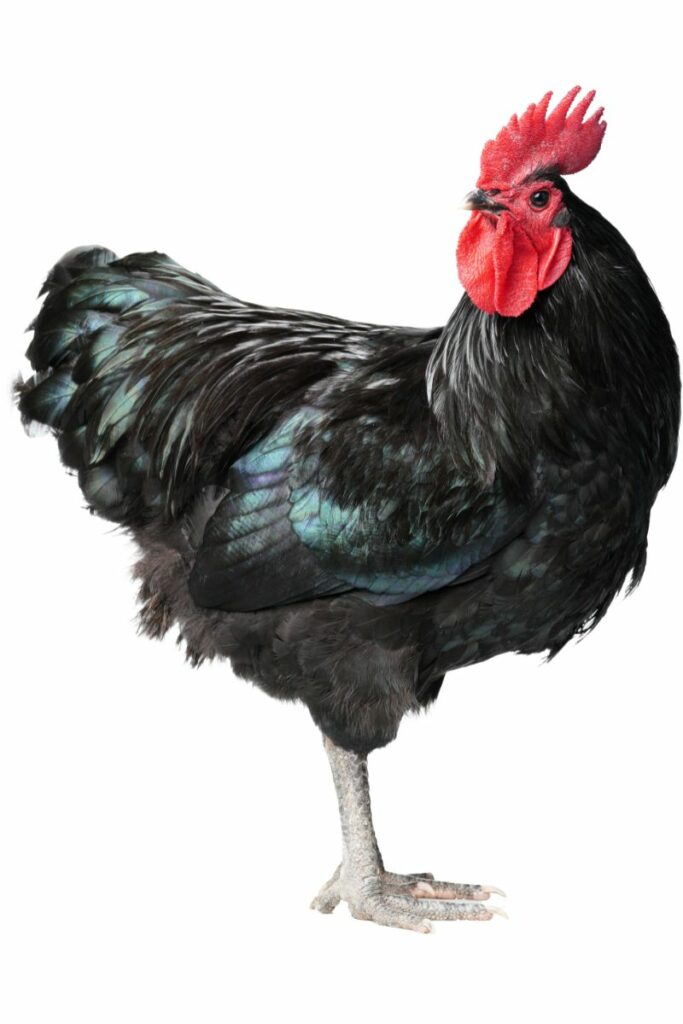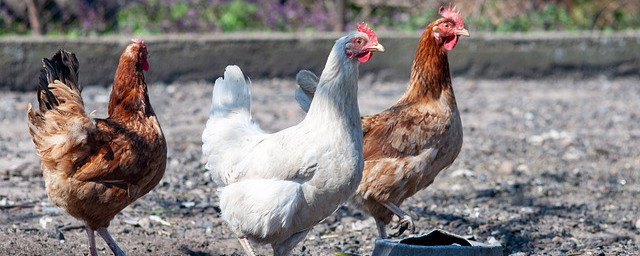Have you ever tried to pick out chickens from what was available at the farm store at the time? You just happened to be there, and the breeds available were unfamiliar to you, so you just didn’t know what to choose. Well, that’s what this article is about. It is not an exhaustive study of chickens that you probably won’t encounter. It’s about common breeds. You would recognize the kind even if you knew nothing about them.
I am going to compare chicken breeds that meet four criteria. They must be:
- Hardy – Like a Timex watch – takes a lickin’ and keeps on tickin’.
- Prolific layers – No less than 200 annually will do.
- Available – No exotics here.
- Friendly – Nobody wants to get attacked every day at egg-gathering time.
White Egg Layers.

The White Leghorn is one of the most well-known chicken breeds there is, thanks in no small part to Foghorn Leghorn. If you don’t know who that is, Google up some old Looneytoon episodes, and you’ll get a chuckle from old Foghorn. These guys check every box, although some might consider them unfriendly because they’re a little standoffish.
There are several other white egg layers, but they don’t check all four boxes. A short list includes Brown Leghorns, Polish, Minorca, and the Andalusian.
Brown Egg Layers.

There are so many of these that I am going to limit the list to five breeds. I’m sure you’ve heard of most of them.
At the top of the list is the Rhode Island Red. These birds are so popular that Rhode Island made them the state bird. They lay many medium to large eggs and are very dependable, laying five or six eggs weekly. Rhodies are hardy and strong, and they love to free-range. The hens also have a great personality. The roosters can be aggressive, but not as a rule. I have always had Reds in my flock.
Next is the Red Star, aka Red Sex Link. This hybrid was bred to lay eggs, and it does so very well, delivering 300 eggs a year or more. They get along well with people but can be a little tough on flock mates. If you see these chicks for sale in the spring, don’t hesitate to add them to your flock. I’ve had them in the past, and they definitely earn their keep.

The Delaware is a fine dual-purpose bird that will lay four or more large to jumbo eggs per week. Having once been bred as a broiler, it will make a fine meal should the occasion call for it. It is a docile bird but tends to be aloof. Delawares are white with black piping on the tail and black speckles on the neck. I haven’t had these birds, but I look forward to giving them a try.
Australorps or Black Australorps are great layers and are also dual-purpose birds. They have a reputation as a shy bird but are very friendly; a great choice if your chickens are around children. If you find Blue or White Australorps, they are essentially the same bird, so don’t shy away from getting them.

Wrapping up the list is the Plymouth Rock. This one is not dual-purpose but is a prolific egg layer. Because of its black and white barred appearance, the Plymouth Rock is also known as the Barred Rock. It’s a nice bird, and it seems like every flock has a few. It’s a hardy, dependable chicken.
For the most part, if you see Rock, Orp, or Star in the name of a chicken, it is likely to be an asset to your flock.
Pretty Egg Layers.
Three breeds are worth mentioning because their eggs add an interesting flair to the basket. Eggs of blue, green, and pink are laid by Araucanas, Americaunas, and Easter Eggers. They are not prolific layers or great dual-purpose chickens, but they are fun, and I like having a few around to add a little sparkle to my egg cartons. All three are variations of the Araucana, so they all have similar traits.
What about the Bantams?
Bantams are not prolific egg layers, nor are they going to make a great Sunday dinner. However, They do lay eggs and add a certain pizzazz to the flock. Spunky, plucky, and fun are good ways to describe them.
Bantams can be miniature versions of full-sized chickens, being half to two-thirds the size of a regular bird. There are also true bantams that have no full-sized counterpart. And there are developed strains of bantams as well. All in all, there are over 400 breeds of bantams.
I have a couple of bantam chickens, a rooster, and a hen. Out of the three roosters that I have, a Light Brahma, an Easter Egger, and a bantam, the banty has by far the loudest, most piercing crow of all.
Because bantams are smaller, they take up less space than big birds. Small size means more room in the coop and less feed consumption. They are good grazers and also good fliers and will use that skill to evade adversaries. I’ve seen my rooster 20 feet up in a tree. I’ve seen him on top of my housetop and on my garage roof. They really are fun.
My Recommendation
Chickens are great fun as well as being quite productive. They make eggs to eat, sell, or give away. Their manure can be composted to make an incomparable amendment to your gardens. You will have to fence in that garden to keep the ravenous little birds out, but you have to take the good with the bad.
It’s not easy to compare chicken breeds. Everyone’s taste is different. Some go for looks, some for eggs, some for meat, and some for all three. Whatever your taste is, there are chicken breeds for you. I like an eclectic mix and am always on the lookout for new genes for the flock.
I recommend deciding what your needs or wants are and building your flock accordingly.
Thanks, and let me know if I can answer any questions for you.
Dave
Chickenmethod.com


